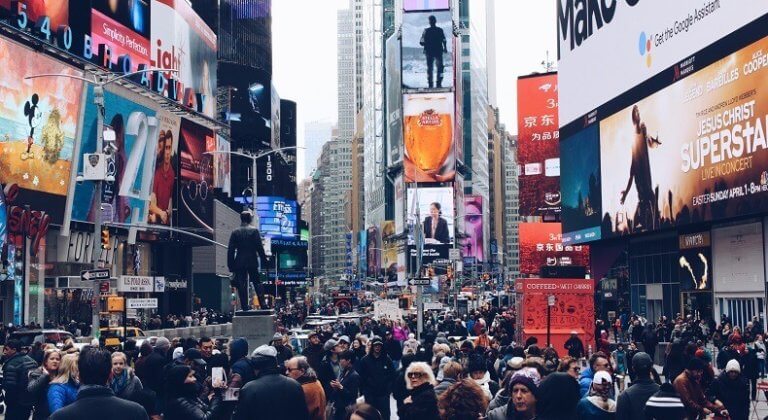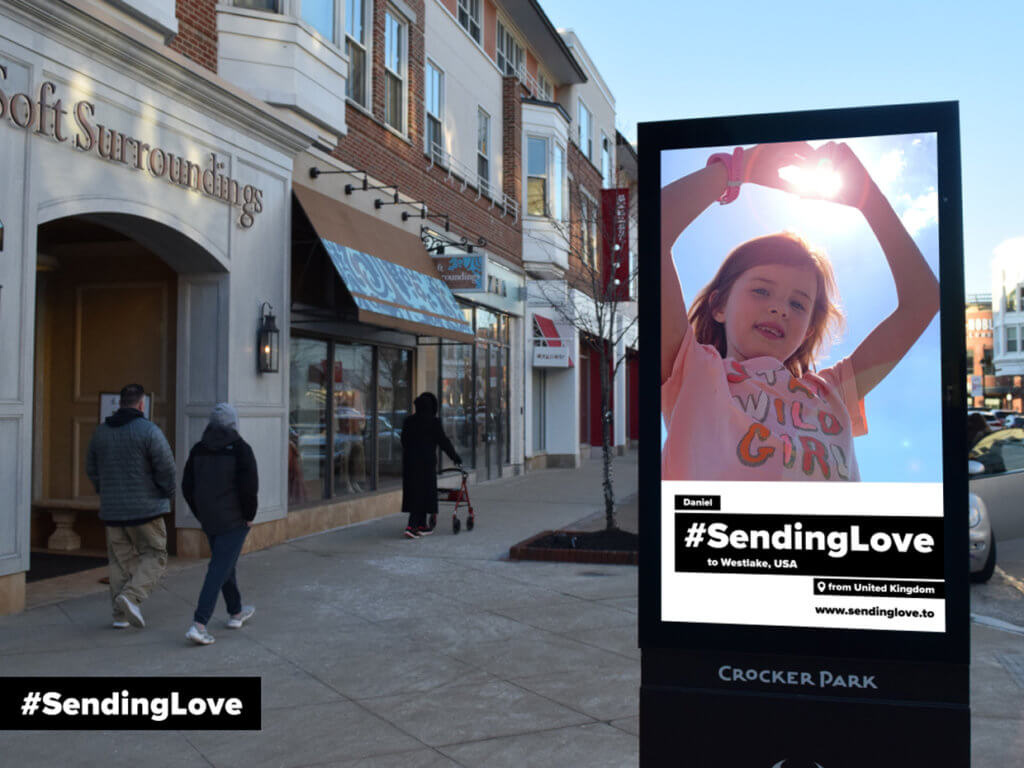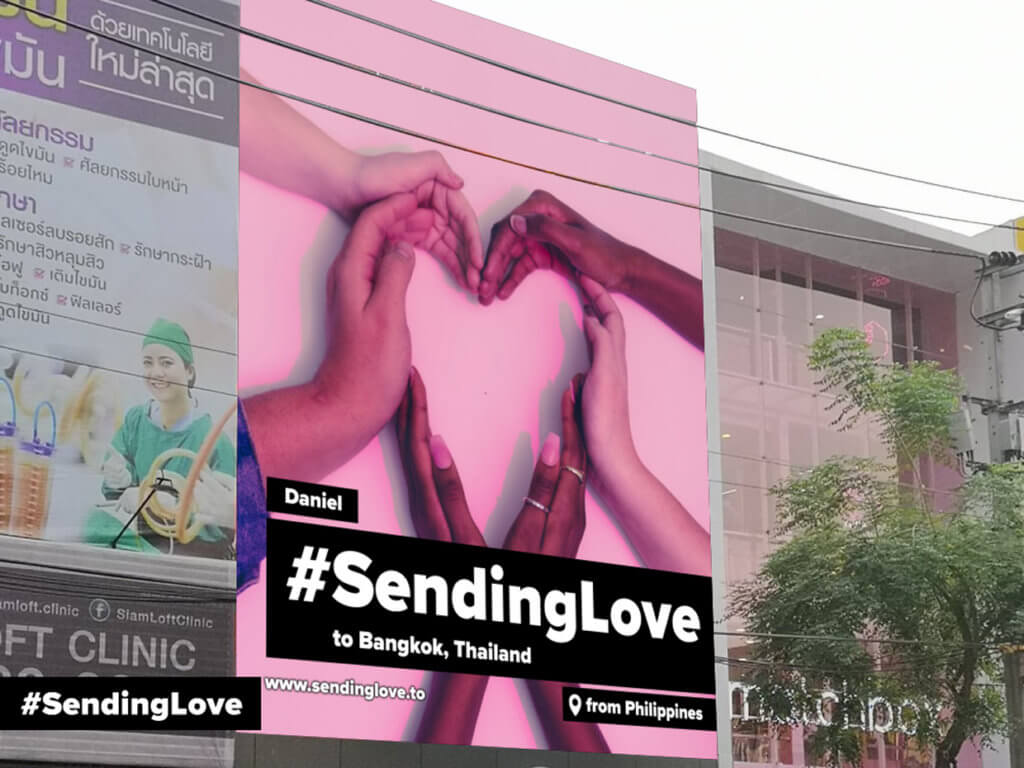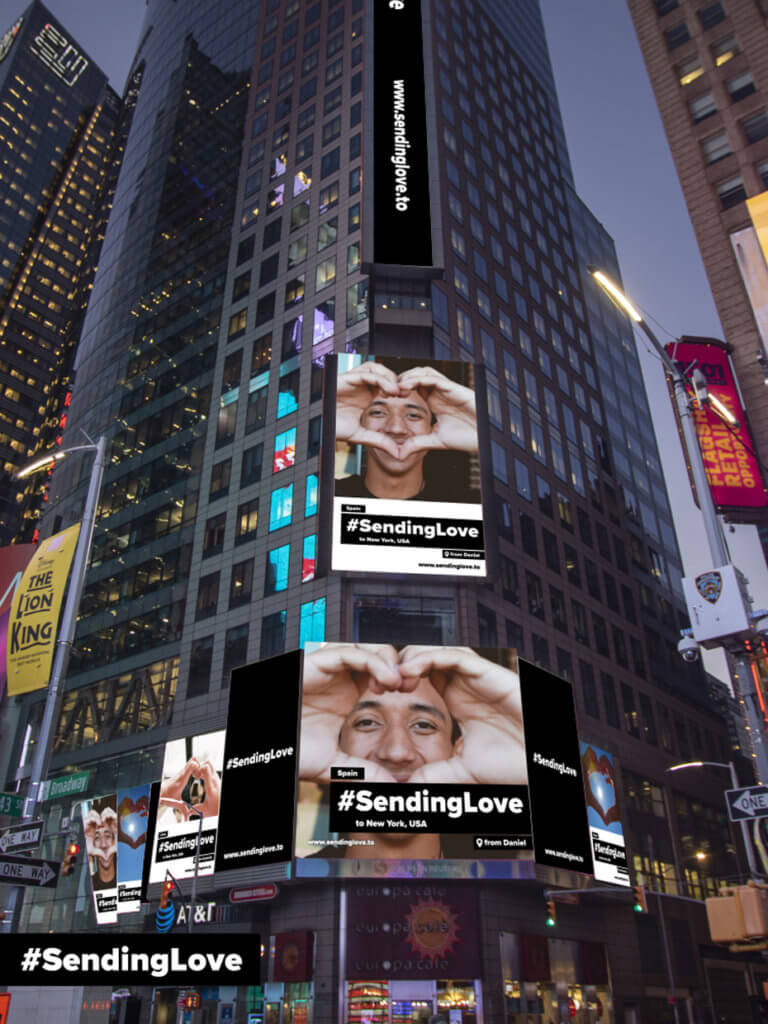
OOH advertising (also known as out-of-home advertising) as we know has evolved an enormous amount since its inception. Technology industries, food industries, gaming industries, you name it, have turned to OOH advertising to spread brand awareness through giant OOH billboards, and we have seen these companies benefit. Reddit co-founder Alexis O’Hanian announced in mid-2018 that he had invested in a booking service called AdQuick, and around the same time Netflix was discovered to have purchased assets from a billboard company in Los Angeles. Why is that so? There is a simple reason: Out-of-home billboard ads are never missed!
With technology rapidly advancing and everything shifting to a digital format, it comes as no surprise that the world is undergoing a transformation. OOH is adapting to the COVID outbreak in 2019 and is growing stronger and coming up with innovative ideas that are blending digital technology with the traditional banners in order to showcase their advertising. In recent years, digital strategies have become increasingly important and many companies have begun adapting to the new environment of OOH. The average consumer is now used to watching 4K advertisements. In order to generate revenue, DOOH, mobile integration and contextual advertisements are key elements.
Digital Outdoor Advertisements
Outside of the home, digital media can be seen everywhere. These displays resemble static billboards and signs and are more cost-effective than other advertising methods. With the use of digital technologies, displays are able to display moving images and interactive features, and they are much more flexible and powerful. Among the most powerful performance marketing channels in the future, OOH will drive both digital and direct conversions. In the coming year, media spending on OOH screens will increase significantly as digital screens expand.
Impressive visibility is what makes DOOH so popular. Most digital advertisements are seen in areas with high traffic, where their content can be seen by many people. The ads cannot be skipped, and a blocker cannot be used to stop them, unlike online advertisements. It has been found to be quite effective in studies. Nielsen found in a study conducted in 2015 that 75% of people knew they saw the digital billboard during the month previous, and about 82% of them remembered seeing it in particular and liked it. Traditional advertisements can clearly be outclassed by DOOH as an interactive media type.
The best way to measure digital out-of-home is by counting how many impressions are generated by a screen. DOOH is one screen for many people, and several people may be looking at one screen at a time. Depending on the business, DOOH uses cameras and sensors that are integrated with analytic platforms to collect impression data. Statistical analysis can also sometimes be conducted by third-party companies such as Geopath or Neilson.
As brands become more conservative with their marketing budgets, Digital OOH Billboards can save a ton of money with eye-catching, heads-turning content. Let’s have a look at some of the best DOOH Advertisements:
A summer campaign by Google in the UK included responsive, data-driven digital outdoor advertising experiences. Through famous local and seasonal searches such as “best ice cream in Glasgow” and “parks nearby,” the campaign shows Google’s Search and Maps functionality. In London and Manchester, the campaign engaged people through dynamic, full motion sites including business hours, customer reviews, and directions. Weather conditions were also displayed on some placements.
Beauty Unaltered
#BeautyunalteredDOOH ads ran in the world’s most iconic and well-known billboard placement, Times Square, as part of CVS’s Beauty Mark social media campaign. This was an interactive campaign created to encourage users to post unedited selfies using the hashtag #beautyunaltered on social media. As a result of the impact of the campaign, users were prompted to upload unedited selfies using the hashtags and @cvs_beauty, earning over 3.6 billion impressions within minutes of launching the campaign. During the display of unretouched images in Time Square celebrating real beauty, a different user face was displayed every ten seconds. By spreading the message of unedited beauty awareness, it made for a powerful yet effective campaign.
Sending Love




As we all know, it was a hard time during the pandemic. In response to the pandemic, The World Out of Home Organisation (WOO) facilitated an ad campaign, and an ad was created by OOH media planner Talon Outdoor. The hashtag for this campaign was #SendingLove. Advertising spaces were donated by many members of the organization in order to allow participants to send love messages. Before their picture began playing on the screen in their chosen city, participants uploaded images to www.sendinglove.to and donated to the global Solidarity Response Fund. A total of $15 million was spent on this campaign, which connected families and friends around the world. How incredible!
McDonald’s
McDonald’s is known for its creative advertising. In June and July 2019, McDonald’s launched a campaign featuring two frozen drinks, strawberry lemonade and “Millionaire Frappe”. Digital signage was used to advertise seasonal drinks when the temperature rose above 22 degrees Celsius, or when the temperature was high enough for passersby to be attracted by the drink. In certain situations, the creative will update the city name and temperature automatically if the temperature is above 25 degrees Celsius. When the temperature dropped at night, the city name and temperature were removed. They were clever yet engaging, providing relevant, timely, and useful information to the audience.
The future looks bright for DOOH
Digital billboards are the most common form of DOOH advertising. Specifically, Business Insider reports that during the year 2020 DOOH advertising spending increased by 1.6%, and this year’s ad spending will increase by 19.2%. By 2023, it is anticipated that DOOH advertising will be worth $3.84 Billion. In 2015, DOOH ad spending comprised just 17.0% of all outdoor advertising in the US. They estimate 42.0% of all outdoor advertising in the US by 2023. According to OAAA, there were only 6,700 digital billboards in the United States in 2016, but by 2020 there were going to be nearly 9,600. 43.3% is an excellent increase over a couple of years.
Wrap Up
As more people stay out of the house, outdoor advertising companies have begun investing more in this type of advertising, such as billboards and transit signs. According to the Bureau of Labour Statistics, on average, Americans spend 8.74 hours outside their homes as they engage in their daily routines including work, leisure, and sports during the course of their day. This is a great opportunity for advertising companies to showcase their creativity on those big billboard banners while using digital technology for interactive advertisements to reach the most people.
Since it is growing every year, digital OOH advertising has a lot of exciting possibilities. Content can be dynamically produced using this technology in conjunction with other technologies. DOOH advertising can offer endless opportunities for creative and informative advertising if it is coupled with other upcoming software, which cannot be done with static billboards. It is not only creative but it can also be used to track impressions made by the audience. The integration of different technologies with dynamic banners will allow us to find out in no time who is the target audience, their age, and gender. Additionally, we can easily understand whether the campaign is reaching the right audience and what impact it is having. It is certainly an appealing option to use DOOH.
OOH has been a traditional method of advertisement, but with advancements in technology, it is evolving drastically, filled with a lot of creativity and surprises, year after year. As the market evolves, digital OOH and 3D OOH advertisements, street, and transit shelter advertisements have been developed that utilize geofencing, retargeting, attribution, and measurement technology that is cost-effective and time-saving for companies. These trends are increasing every day, the OOH medium is about to change the industry for good and these advancements are elevating the company to the next level.
Updated November 14, 2021


